Why the Hell Is WordPress Still #1?
Seriously, it’s 2025. We’ve got incredible tools at our fingertips, yet WordPress is still the world’s most-used CMS. It powers over 40% of websites on the internet. And while I can appreciate a good legacy story, I just can’t wrap my head around why this clunky, bloated dinosaur still gets top billing.
If you’re a web developer, you already know the drill. WordPress is like that old ute you keep fixing because it’s familiar—not because it runs well.
Security Nightmares Waiting to Happen
Let’s start with the big one: security. WordPress is a hacker’s playground. The moment you spin up a fresh install, bots are already probing it. Why? Because its plugin ecosystem is a mixed bag of gold, garbage, and gaping holes.
Sure, the core is reasonably secure, but the moment you add plugins (which you have to, because core WordPress does bugger all out of the box), you’re rolling the dice. And the update treadmill? If you forget to run updates for even a few weeks, you’re basically leaving your front door open with a sign that says “Come on in.”
Plugins: Can’t Live With ‘Em…
WordPress without plugins is like a sausage roll without the filling—technically still there, but utterly useless. Need a contact form? Plugin. SEO tools? Plugin. Better block controls? Plugin. Want it to actually look good? Yep—plugin.
The problem is, all these plugins come from different developers with different standards. Conflicts are common. Updates break things. And half the time, you don’t even know what’s slowing your site down because five plugins are all trying to do the same thing in different ways.
It’s like building a house with a toolbox full of mismatched Allen keys and crossed fingers.
Page Builders: Drag, Drop, Wait, Wait, Wait…
Don’t even get me started on page builders. Elementor, WPBakery, Divi… they’re meant to make life easier, but they’re really just a band-aid over the fact that WordPress isn’t built for flexible front-end design.
They’re heavy, slow, and churn out awful markup. Sites built with them often crawl along, especially on mobile. Core Web Vitals? Good luck with that.
And yes, I get that these builders are empowering for non-techies—but should we really be sacrificing performance and accessibility just because someone wants to drag and drop a heading?
People Think It’s Free, But…
This one’s a classic trap. WordPress markets itself as free—and technically, it is. You can download it, install it, and run it without paying a cent. But here’s the kicker: building and maintaining a decent WordPress site comes with costs. Real ones.
Need premium plugins? That’ll be $59 a year… each. Fancy a “pro” theme? That’s another $79. Oh, and good luck running it all on a $5/month shared host without your site turning into a snail. You’ll likely end up needing premium hosting, backup services, security plugins, caching tools—the list goes on.
Before you know it, your “free” website is costing more than a tailored setup on a modern CMS that’s faster, cleaner, and far less prone to breaking.
WordPress feels cheap, but it’s often a false economy.
WordPress Wins by Default, Not Design
So why do people still use it?
Simple: it’s popular. Everyone’s heard of it. Every second hosting plan throws in a one-click install. There are themes for everything, a plugin for every possible need, and more tutorials on YouTube than you could ever want.
It’s the safe bet. But safe doesn’t mean good.
Most people aren’t choosing WordPress because it’s the best CMS. They’re choosing it because it’s the most familiar. And that’s a problem.
There Are Better Tools, I Promise
These days, we’ve got way better options. CMSs like Statamic or even headless setups that offer modern, secure, and fast alternatives. You don’t need 37 plugins just to get your content online, and you don’t have to pray every time you hit “update.”
These platforms are built for today’s web—not the one we had in 2005.
I’m not saying WordPress doesn’t have a place anymore. But its spot at the top? That’s more about momentum than merit. If you’re building a new site today, ask yourself: do you really want to rely on a stack of plugins, sluggish page builders, and constant updates?
Because there’s a better way—and it doesn’t start with “W” and end with “Press”.

